Guinea pigs are adorable and beloved pets that require a carefully balanced diet to stay healthy. While many foods are safe for guinea pigs, some items in our kitchen pantry may be harmful to them. As a responsible pet owner, you may wonder – can guinea pigs eat maple leaves?
This article aims to provide a comprehensive safety guide to help you understand the potential risks, nutritional benefits, and best practices of feeding your pet guinea pig maple leaves. Read on to learn more.
Key Takeaways:
- Maple leaves may provide nutritional benefits to guinea pigs.
- It’s important to carefully monitor your guinea pig’s response to maple leaves and introduce them gradually into their diet.
- If you’re unsure about feeding maple leaves to your guinea pig, there are alternative safe leaf options to consider.
- A balanced diet is crucial to your guinea pig’s health and well-being.
- Consult with your veterinarian before making any significant changes to your pet’s diet.
Understanding Guinea Pigs’ Dietary Needs
Guinea pigs have specific dietary requirements to maintain optimal health and prevent potential health issues. A balanced guinea pig diet consists of high-quality hay, fresh vegetables, fresh fruits, and fortified guinea pig pellets.
Hay provides the necessary fiber that guinea pigs need for digestion. Fresh vegetables such as kale, bell peppers, and carrots contribute essential vitamins and minerals. Fresh fruits like strawberries and blueberries can also provide nutrients, but due to their high sugar content, they should be fed in moderation. Fortified guinea pig pellets offer an additional source of nutrients and should be offered in limited amounts.
It is crucial to avoid feeding guinea pigs foods that are harmful to their health. These foods include chocolate, avocado, potato, and any human food intended for consumption, such as junk food and fried food. Giving your guinea pigs human foods can lead to digestive issues, weight gain, and other health complications.
Key Nutrients for Guinea Pigs
- Vitamin C: Guinea pigs lack the ability to produce their vitamin C, so it’s essential to provide them with a vitamin C-rich diet to prevent scurvy.
- Fiber: Fiber aids in digestion, helps keep teeth healthy, and prevents obesity.
- Calcium: Calcium contributes to good dental health and aids in bone strength.
- Protein: Due to their herbivorous diet, guinea pigs may require additional protein sources such as alfalfa hay or fortified pellets.
Understanding the importance of a balanced diet and the nutrients that guinea pigs require will help ensure that their dietary needs are met and that they remain healthy and happy.
Are Maple Leaves Safe for Guinea Pigs?
If you are considering feeding maple leaves to your guinea pigs, safety is a top concern. While maple leaves themselves are not toxic to guinea pigs, there are still potential risks to keep in mind. One of the main concerns is the pesticide residue that may be present on the leaves. Pesticides used on maple trees can be harmful to small animals like guinea pigs, even in small amounts.
Another risk is the potential for choking or digestive blockages. Maple leaves are tough and fibrous, which can make them difficult for guinea pigs to chew and digest properly. This can result in a choking hazard or digestive issues.
Lastly, as with any new food, introducing maple leaves to your guinea pigs’ diet too quickly can cause stomach upset. It’s essential to introduce new foods gradually and monitor your pets’ response.
Overall, it is possible to feed maple leaves to guinea pigs safely, but it’s crucial to take precautions. Ensure the leaves are thoroughly washed and free of any chemicals, introduce them gradually, and watch your guinea pigs carefully for any adverse reactions.
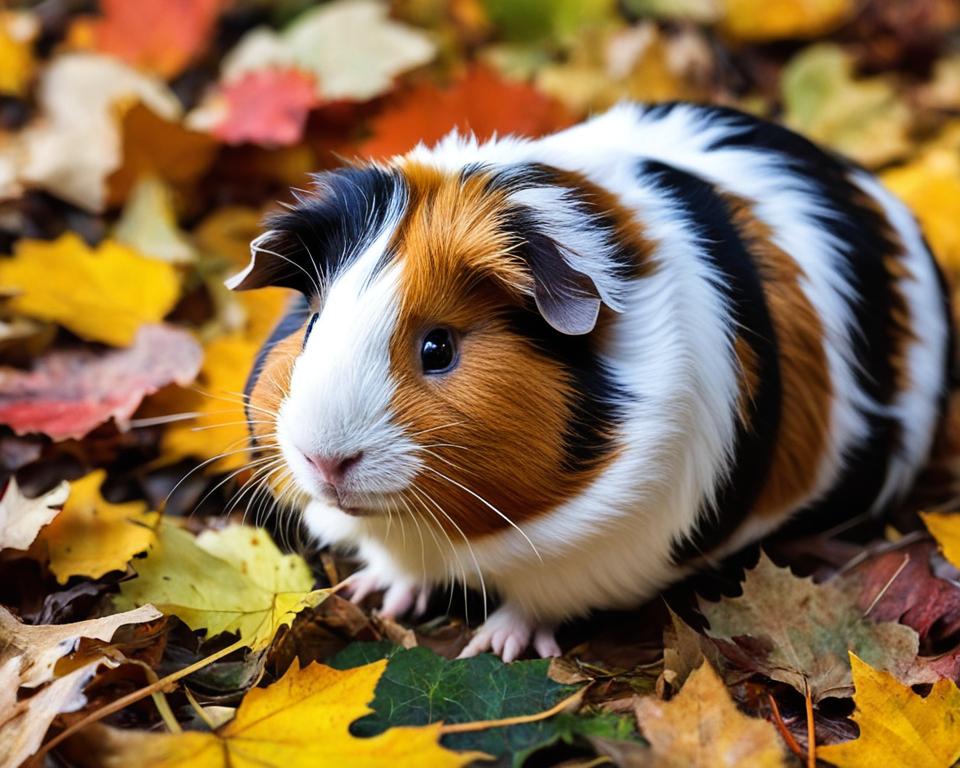
Nutritional Value of Maple Leaves
Maple leaves contain a variety of essential nutrients that can benefit guinea pigs. Among these are:
- Fiber: Maple leaves are a good source of dietary fiber, which can aid digestion and promote bowel regularity.
- Vitamin C: Guinea pigs require vitamin C in their diet, and maple leaves contain a moderate amount of this important nutrient.
- Calcium: While maple leaves contain calcium, it’s important to note that they also contain oxalates, which can decrease calcium absorption in the body. Therefore, it’s important not to rely solely on maple leaves as a calcium source in a guinea pig’s diet.
- Other vitamins and minerals: Maple leaves also contain other important vitamins and minerals such as vitamin A, iron, and potassium.
Overall, incorporating maple leaves into a guinea pig’s diet can provide some nutritional value, but it shouldn’t be the only source of these essential nutrients.
Possible Risks and Side Effects
While maple leaves can provide some nutritional benefits to guinea pigs, they may also pose some risks and side effects. One of the most significant risks is that maple leaves may contain pesticides or chemicals that can be harmful to your pet’s health. Therefore, it’s essential to ensure that any maple leaves you feed to your guinea pig are free of toxins.
Another potential side effect of feeding maple leaves to guinea pigs is digestive problems. Maple leaves contain high amounts of fiber, which can be difficult for guinea pigs to digest in large quantities. Overconsumption of maple leaves may lead to diarrhea or other digestive issues.
Lastly, feeding too many maple leaves to your guinea pig can create an imbalance in their diet. While they may receive some of the essential nutrients they need, a diet consisting solely of maple leaves may lack certain vitamins and minerals vital to their overall health.
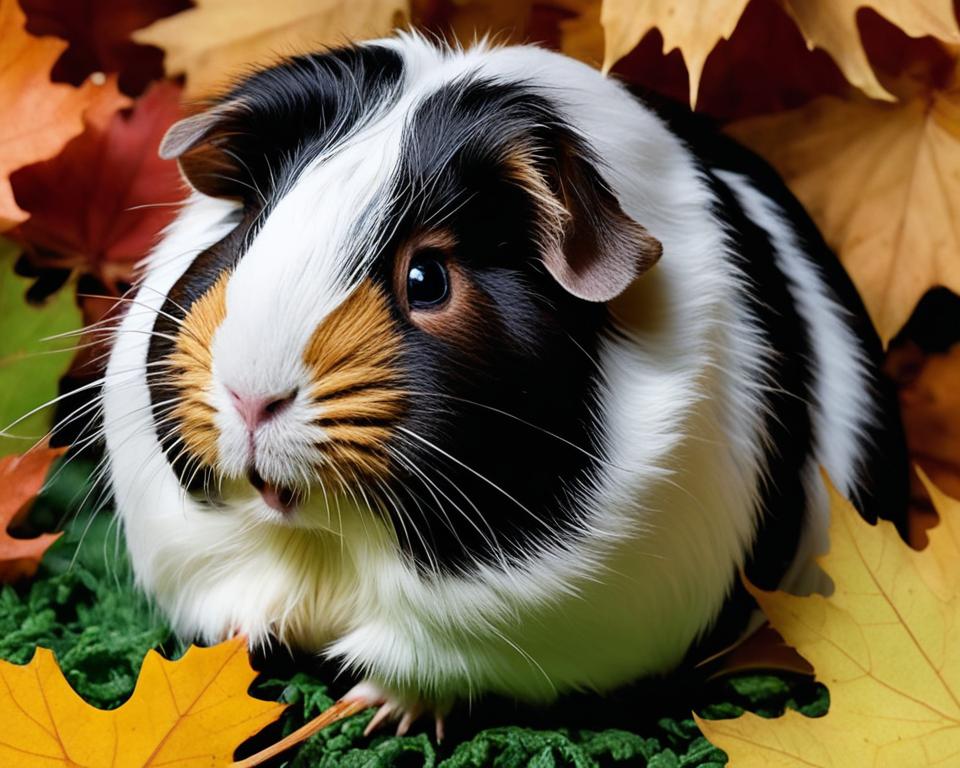
How to Introduce Maple Leaves to Guinea Pigs
Now that you’ve decided to introduce maple leaves into your guinea pig’s diet, it’s crucial to do so gradually. This will allow your pet to adjust to the new food and avoid any digestive issues that may arise from abrupt changes.
Here’s a step-by-step guide on how to introduce maple leaves to your guinea pig:
- Start with a small amount of maple leaves- about one to two leaves at first.
- Observe your guinea pig’s response for the next 24 hours. If there are no adverse reactions, you can gradually increase the amount of maple leaves by adding one additional leaf every 3-4 days.
- Monitor your guinea pig’s bowel movements. If you notice any changes in frequency or texture, reduce the amount of maple leaves in their diet or stop feeding them altogether.
- Ensure that the maple leaves are washed thoroughly before feeding them to your pet. Avoid giving them leaves from trees that may have been sprayed with pesticides or chemicals.
- Remember to always provide your guinea pig with unlimited access to clean, fresh water.
Following these guidelines will help you introduce maple leaves safely and comfortably to your guinea pig.
Alternative Leaf Options for Guinea Pigs
If you’re looking for alternative leaf options for your guinea pigs, there are plenty of safe and nutritious choices to consider. These options can provide variety in your pet’s diet and offer different nutritional benefits.
Kale
Kale is a popular leafy green that is packed with vitamin C and other essential nutrients. Guinea pigs enjoy the taste and texture of kale, making it an excellent option to consider.
Arugula
Arugula is a leafy green that is high in vitamin K and other essential nutrients. It has a peppery, slightly bitter taste that many guinea pigs enjoy.
Romaine Lettuce
Romaine lettuce is a safe and nutritious leafy green that is high in fiber and other essential nutrients. It has a mild taste and can be a great addition to your pet’s diet.
Cilantro
Cilantro is an herb that is safe and nutritious for guinea pigs to eat. It is high in vitamin C and other essential nutrients and has a fresh, citrusy taste that many guinea pigs find appealing.
Spinach
Spinach is a leafy green that is high in essential nutrients, including iron, calcium, and vitamin C. However, it should only be fed in moderation due to its high oxalic acid content, which can interfere with calcium absorption in guinea pigs.
Remember to introduce new leaf options slowly and monitor your guinea pig’s response. Too many new foods at once can upset their digestive system and lead to health problems.
Other Considerations for a Healthy Guinea Pig Diet
While it’s important to understand what foods are safe for guinea pigs, it’s equally important to provide them with a well-rounded and balanced diet. Here are some essential considerations for a healthy guinea pig diet:
- Hay: Guinea pigs need to constantly grind down their teeth to prevent malocclusion, a painful condition that causes misalignment. Timothy or grass hay can be the foundation of a guinea pig’s diet and should be available at all times.
- Pellets: Guinea pig pellets provide a concentrated source of essential nutrients and should make up no more than 1/8th of their daily diet. Look for pellets that are specifically formulated for guinea pigs and avoid those that contain added sugars or artificial colors.
- Vegetables: Fresh, leafy greens should make up the majority of a guinea pig’s vegetable intake. Provide a variety of vegetables to ensure they receive all the necessary vitamins and minerals. Avoid vegetables that are high in oxalic acid or nitrates, such as spinach or beet greens.
By providing a balanced diet, including appropriate quantities of hay, pellets and vegetables, your guinea pig can thrive. Remember to always provide fresh water and consult your veterinarian if you have any concerns about their diet.
Conclusion
In conclusion, feeding maple leaves to guinea pigs can be safe and beneficial if done correctly. It’s essential to keep in mind that they should only be one component of a balanced and varied diet for your furry friend.
While maple leaves contain essential nutrients, they should always be introduced gradually and monitored for any adverse reactions. It’s also important to ensure that the leaves are free from pesticides and other toxins that could harm your pet.
If you’re unsure about feeding maple leaves to your guinea pig, there are alternative leaf options available, such as lettuce, spinach, and kale, that offer similar nutritional benefits.
Remember, the key to a healthy guinea pig is a balanced diet, plenty of fresh water, and a clean living environment. By following these guidelines, you can ensure that your guinea pig stays happy and healthy for years to come.
FAQ
Can guinea pigs eat maple leaves?
Yes, guinea pigs can eat maple leaves. However, there are important considerations to keep in mind to ensure their safety and well-being.
Are maple leaves safe for guinea pigs?
Maple leaves are generally safe for guinea pigs to consume. However, it’s important to introduce them gradually and monitor their response, as some guinea pigs may have individual sensitivities.
What is the nutritional value of maple leaves for guinea pigs?
Maple leaves contain various nutrients that can benefit guinea pigs, such as fiber, vitamins, and minerals. However, they should be fed in moderation and as part of a balanced diet.
What are the possible risks and side effects of feeding maple leaves to guinea pigs?
While maple leaves are generally safe, there are potential risks and side effects to be aware of. These may include digestive issues, allergies, or pesticide contamination if the leaves are not organic.
How should I introduce maple leaves to my guinea pigs?
It’s best to introduce maple leaves gradually to your guinea pigs’ diet. Start by offering a small amount and observe their response. If they tolerate it well, you can gradually increase the portion size.
Are there alternative leaf options for guinea pigs if I’m hesitant about feeding them maple leaves?
Yes, there are alternative leaf options that you can consider for your guinea pigs, such as romaine lettuce, cilantro, or parsley. These leaves are safe and nutritious choices for your furry friends.
What other considerations should I keep in mind for my guinea pigs’ diet?
While maple leaves can be included in their diet, it’s important to provide a balanced and varied diet that includes hay, fresh vegetables, and a small amount of pellets. Avoid feeding them harmful foods like chocolate, caffeine, or onions.
Is it recommended to feed maple leaves to guinea pigs?
While you can feed maple leaves to guinea pigs, it’s essential to do so in moderation and alongside a well-balanced diet. Consulting with a veterinarian is always advised before making any significant changes to your pets’ diet.

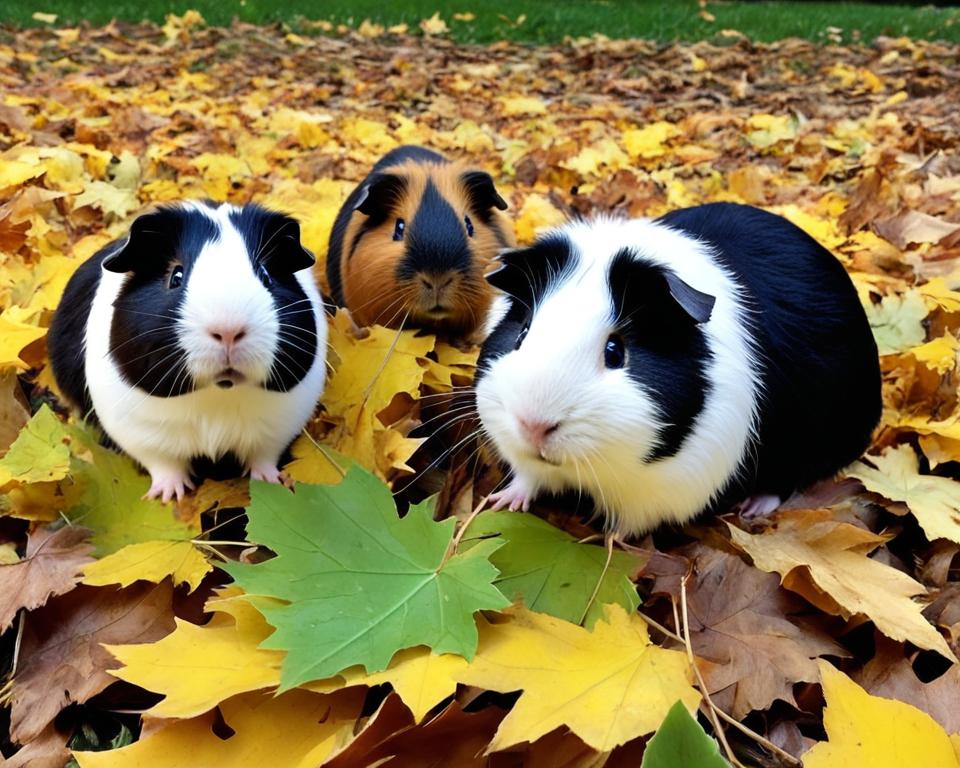
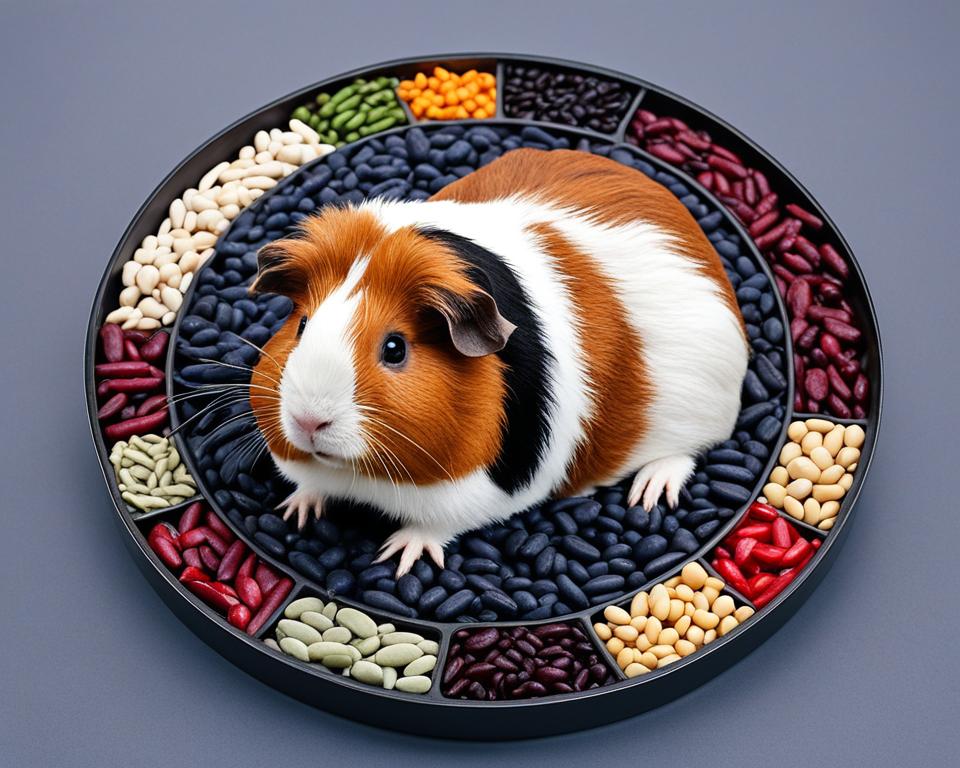
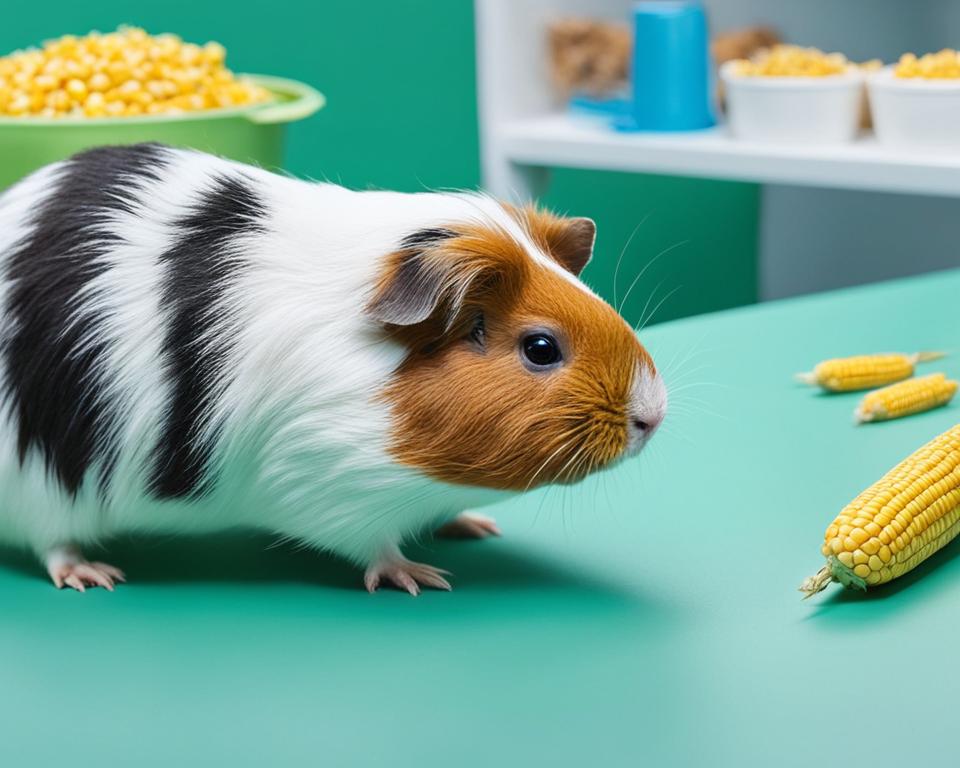
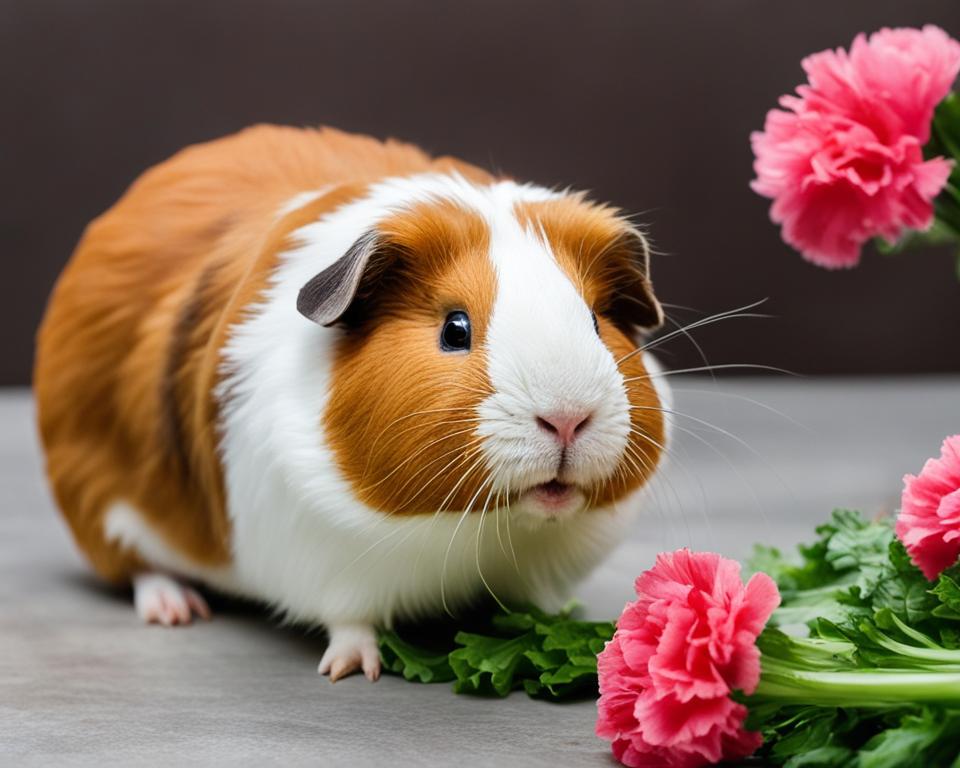
Leave a Reply